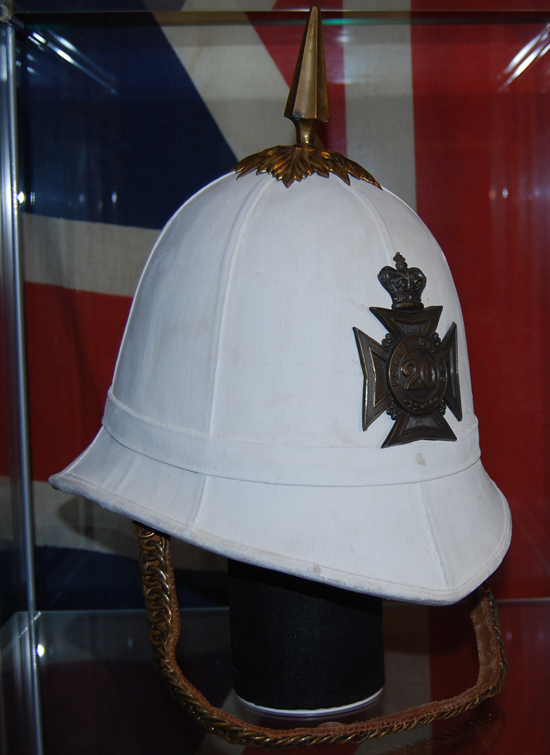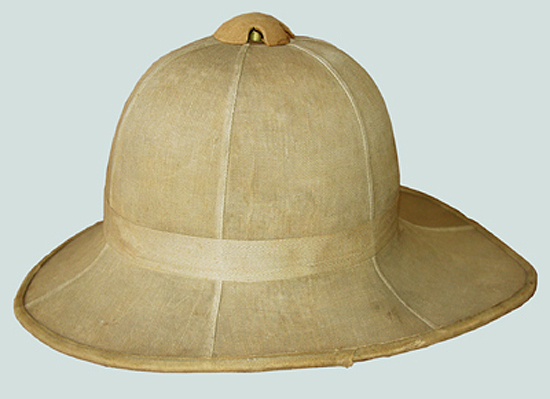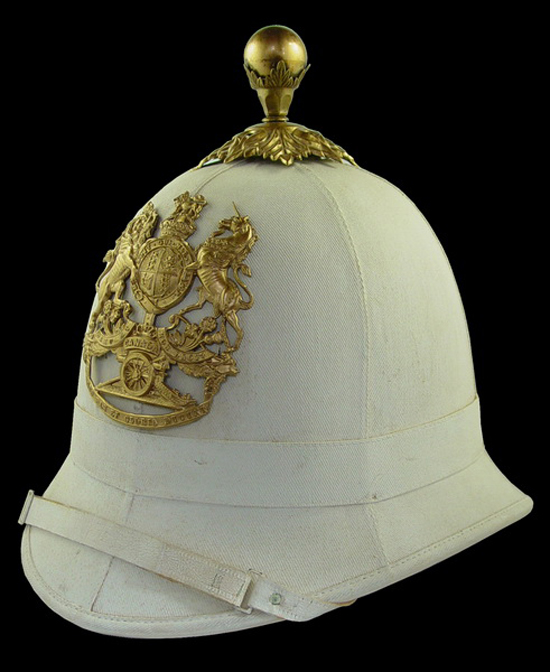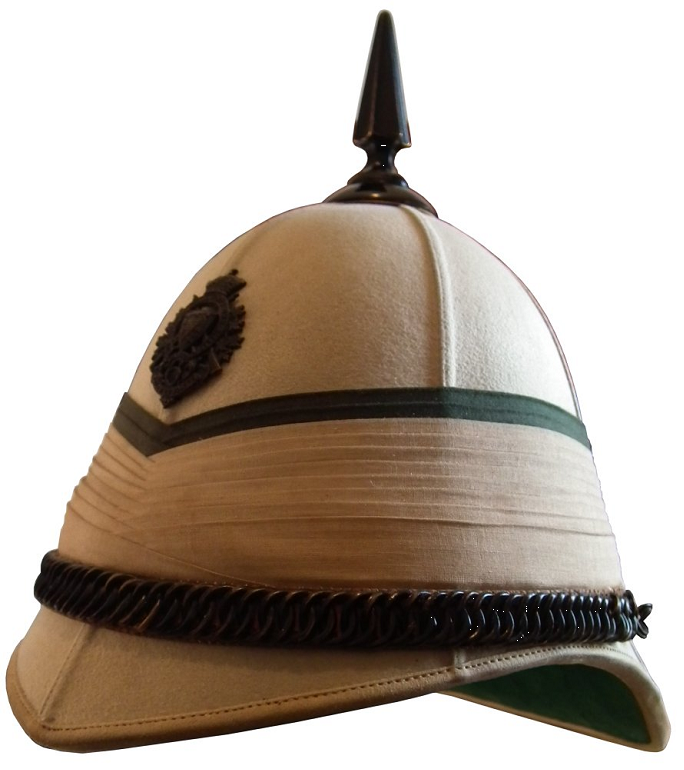 The helmet is attributed to Major James Skitt Matthews, born in 1878 in Wales, and died in 1970 at the age of 92 in Vancouver. James Skitt Matthews was a well known figure around the Vancouver area, and was appointed Vancouver’s first archivist in 1933. He was also a much respected historian of the city and amassed a huge collection of photos relating to Vancouver. In his early life he joined a local militia unit in 1903 and at the outbreak of war in 1914 was transferred to the Regular Army and fought with The Duke of Connaught’s Own Rifles throughout 1916 to 1918 during World War One. His tough no nonsense style made him something of a hero to his men in the trenches. Continue reading
The helmet is attributed to Major James Skitt Matthews, born in 1878 in Wales, and died in 1970 at the age of 92 in Vancouver. James Skitt Matthews was a well known figure around the Vancouver area, and was appointed Vancouver’s first archivist in 1933. He was also a much respected historian of the city and amassed a huge collection of photos relating to Vancouver. In his early life he joined a local militia unit in 1903 and at the outbreak of war in 1914 was transferred to the Regular Army and fought with The Duke of Connaught’s Own Rifles throughout 1916 to 1918 during World War One. His tough no nonsense style made him something of a hero to his men in the trenches. Continue reading
Category Archives: Canada
Universal Pattern Helmet to the Lorne (Scots) Rifles
The Lorne Scots (Peel, Dufferin and Halton Regiment) is today a Primary Reserve Infantry regiment of the Canadian Army .The Lorne Scots originated in Brampton, Ontario in September 1866, as the 36th “Peel Battalion of Infantry,” and was redesignated as the 36th Peel Regiment in May 1900, as The Peel Regiment in May 1920 and The Peel and Dufferin Regiment in April 1923. In December 1936, it was amalgamated with The Lorne Rifles (Scottish) and redesignated The Lorne Scots (Peel, Dufferin and Halton Regiment).
The first Scottish connection was made in September 1879 when the Halton Rifles were reviewed by His Excellency The Marquis of Lorne and permission was received in 1881 to redesignate the 20th Halton Rifles as the 20th Halton Battalion Lorne Rifles. Continue reading
The Canadian Pressed Fiber Helmet of World War II
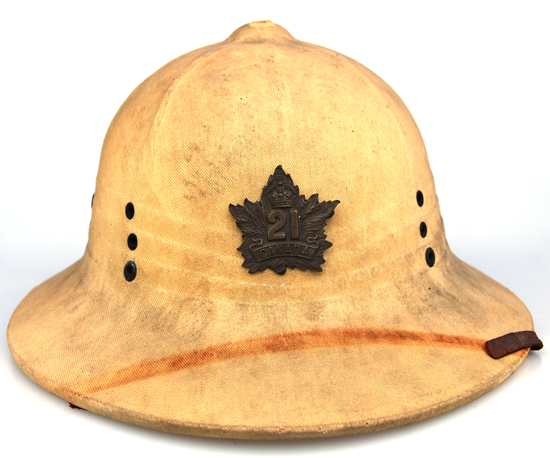
A Canadian World War II era pressed fiber helmet. While it was against regulations many regiments issued these helmets with cap badges. This example features a 21st Battalion, Canadian Expeditionary Corps cap badge. (Collection of the Author)
While little has been written about the American pressed fiber sun helmet, even less has been written about the versions used by Canada. According to our friend and colleague Clive Law the Canadian Army acquired the “fibre” helmets prior to the outbreak of the Second World War for summer training as a substitute for the more expensive and fragile Wolseley helmet.
The Canadian Royal Horse Artillery
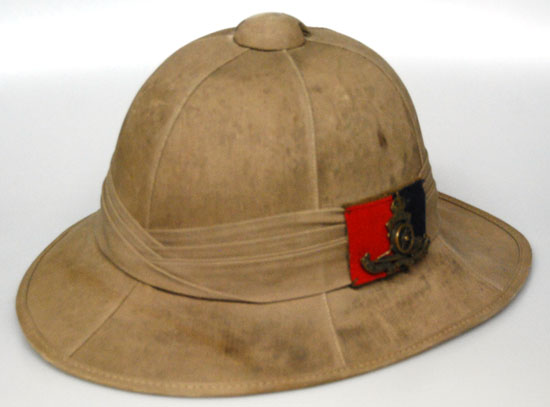 The Canadian military is most remembered for its heroic actions in Italy and Western Europe during the Second World War, but it was still active in every theater of war. More than 1.1 million Canadians served in the Army, Navy and Air Force and its entry into the conflict was the nation’s first independent declaration of war.
The Canadian military is most remembered for its heroic actions in Italy and Western Europe during the Second World War, but it was still active in every theater of war. More than 1.1 million Canadians served in the Army, Navy and Air Force and its entry into the conflict was the nation’s first independent declaration of war.
During the North African, Middle Eastern and Sicilian campaigns the Canadian army was outfitted in a tropical uniform. Among the more “anachronistic” looking of these was the uniform worn by units of the Royal Canadian Horse Artillery.
Regimental Identity and the 20th Century Khaki Helmet
When, in 1911, the Department of Militia & Defence (M&D) ordered the transition from the white Universal helmet to the white Wolseley pattern helmet they permitted existing pugarees to continue to be worn. This satisfied the need for regimental identities for most orders of dress. However, the 1904 introduction of drab Service Dress called for either a khaki cover to the helmet or a khaki helmet left the Militia with little opportunity for regimental expression. Continue reading
The British Four Panel Colonial Helmet
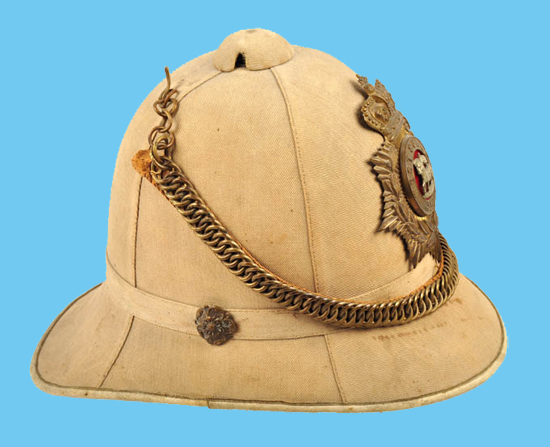
An example of a Colonial Pattern helmet with four panels rather than the more usual and authorized six panels. This example is to an Other Rank of the Queen’s Royal Regiment (West Surrey). (Photo courtesy Roland Gruschka)
The 1st Battalion West Surrey was stationed in Malta in 1892 and it appears that this type of helmet was not uncommon in Mediterranean stations for the British Army. However, the Dress Regulations of 1894 state that puggarees were to be worn in such stations as India, Bermuda, Ceylon, Hong Kong, Egypt, the Straits Settlements, West Indies, Mauritius, Malta, West Coast of Africa and Cyprus and that the full Home Service pattern helmet plate was to be worn at other stations, i.e. those where the puggaree was not authorized. There was a term “Mediterranean Order” which translated to no puggaree but full helmet plate and it appears that the cork ventilation was also a feature of this “order.” In 1899 puggarees were authorised for all stations abroad. Continue reading
Canadian Universal Pattern Helmet
Shortly after the adoption of the Home Service Helmet in 1878 by the British War Office, the Canadian Department of Militia and Defence (M&D) followed suit. However, within a few years this pattern, which included blue helmets for Infantry and the various Corps, Green for Light Infantry and a short-lived dark Green for Rifle regiments, M&D did a volte face and ordered the white ‘Foreign Service’ pattern helmet for general use. Continue reading

